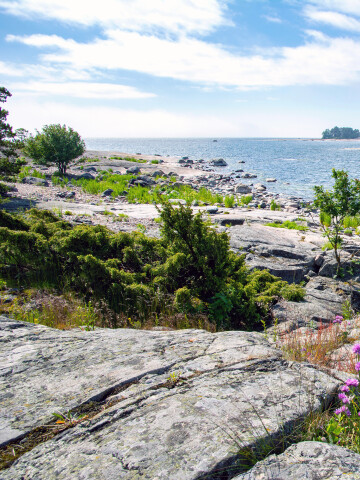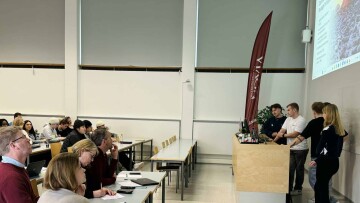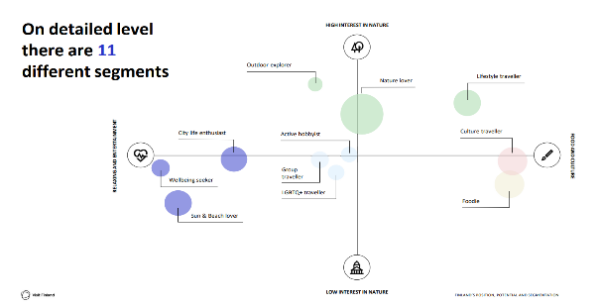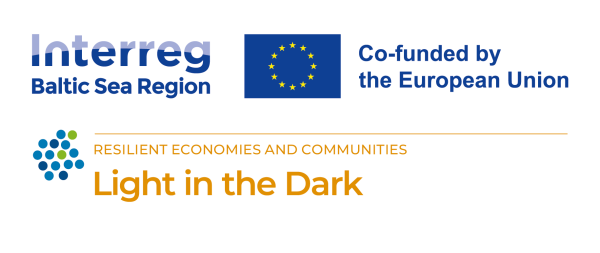
FUI-Bloggen
FUI är förkortningen för forskning, utveckling och innovation. I FUI-bloggen skriver Yrkeshögskolan Novias personal om sitt jobb, forskning, projektverksamhet och andra betraktelser.
Blogginlägg som är granskat av Novias redaktionsråd är utmärkta med nyckelordet "Granskat inlägg".
Vi följer CC-BY 4.0 om inget annat nämns.
Light in the Dark- Design Jam

How can you attract tourist to come to Finland outside of the summer season, especially during the dark winter period? This is one of the main questions the EU-funded project Light in the Dark strives to answer. (Simpson, J & Engberg, M 2024)
As a part of the project Light in the Dark, and in connection with a course in service design for approximately 70 third year-students of business at Novia UAS, a so-called design jam was carried out. The design jam consisted of a day’s work in randomly selected groups of five persons from three student teams, as well as seven exchange students from Germany, France, the Netherlands, and Spain.
Prior to the event, which took place on April 4, 2024, the students participated in expert lectures about service design, as well as carried out projects for different commissioners. The projects varied from creating new services to improving existing ones, with the help of service design tools that the students had familiarized with as part of the course. This gave them a solid ground to stand on for the conclusion of the course design jam.
The design jam challenged the students with “how to sell darkness to tourists coming to the Finnish archipelago”. The idea stemmed from an article in the local newspaper about how appealing and exotic the Finnish darkness and stillness outside of the tourist season could be for foreigners, if only we knew how to package and sell it (Malkamäki, 2024). Personas developed by Visit Finland were added to the equation, and the student groups were told to choose a persona, as well as a European market to aim their offering at.

Figure 1. Personas created based on customer segmentation. (Visit Finland, 2023)
After that, they were asked to develop a 2–3-day package with activities for the target group and to develop a pitch to present their ideas. The pitch had to include pricing information.
The assignment was presented to the students by James Simpson, the Project Manager for Light in the Dark, who also gave a brief introduction of the project. In addition, the Tourism Director of Pargas, Benjamin Donner, presented the tourism sector and current topics in relation to that. After him, sustainability coordinator Maria Pick from Örö presented how Kimito and Örö have worked with darkness in the form of a festival called Mörkö, and what kind of activities it involved, to provide some examples as well as inspiration to the students.
Service design is all about understanding and fulfilling customer needs. To find out which these are and to achieve the best fit, there are several methods ranging from creating personas and empathy maps to outlining customer journeys and service blueprints. According to the double diamond framework (portrayed in the figure below), service design is an iterative process, starting with a clear definition of the problem before focusing on developing and delivering the solution. In designing the service, you move between divergent and convergent thinking. (Stickdorn & Schneider, 2012)

Figure 2. The double diamond. (Dwass, 2023)
During the design jam, the students worked in groups based on the double diamond model: first researching the problem, then brainstorming, developing, and testing different ideas with the commissioners, mentors, and potential customers. They used several service design tools in the process. After this, they developed a presentation in a pitch format, which they in the afternoon pitched to a jury of the above people. The jury chose the winning pitch, and the group was rewarded with a dinner at the Archipelago Bar (Skärgårdsbaren). The winners, the group called “The Stellar Archipelago Trips” introduced the slogan “Discover the bright side of darkness”, developed a comprehensive 3-day-package consisting of different activities with clear pricing information. They further included visual and auditive elements in their pitch, giving the audience the opportunity to imagine how the experience would feel.
Based on reflections afterwards, the students appreciated the possibility to work intensively and creatively with new people on a real assignment, applying the theory they had learned prior to the design jam. “One of the highlights of the course for me was undoubtedly the Service Design Jam. It was a dynamic experience that combined applying learned service design tools with collaborating in a new, randomly assigned group on a fresh project.”
The seven exchange students were in different groups, which made them the only non-Finnish person in the group and brought some diversity and fresh perspectives, while at the same time giving the exchange students an insight into Finnish tourism. This is something that should be paid more attention to when welcoming exchange students to our campuses: include them more in mixed groups to get to know and work with Finnish students, whereby both parties can learn from each other. As one of the exchange students put it: “Typically, we do not collaborate with mixed teams, preferring to work exclusively with other exchange students. I believe that this diverse composition was a valuable addition to the project.”
Design jams, hackathons and other similar events provide a platform for students to apply their learnings, meet new people and use the differences within the group to create innovative ideas in a short time frame. Several students made remarks about the event, challenging them to think creatively, collectively and outside the box, something that they feel they can make use of also outside of this event. “I found it impressive to see how different perspectives and skill sets converged to create a multitude of innovative solutions within a constrained timeframe. In general, this activity highlighted the power and necessity of thinking creatively and I found this to be a valuable learning experience.”
Novia Business will continue to include these kinds of events in future courses, as it has proven to be an effective method for engaging students as well as enhancing their learning. A follow-up design jam is planned within the project for the spring of 2025, preferably in collaboration with students from project partners in different countries, further adding to the diversity factor.
References
- Simpson, J. & Engberg, M. (2024). Interreg Baltic Sea Region Light in the Dark. Novialia. Retrieved 31.5. 2024 from https://novialia.novia.fi/novialia/bloggar/fui-bloggen/interreg-baltic-sea-region-light-in-the-dark-
- Godesky, J. (2023). The problem with the double diamond. Retrieved 10.6.2024 from https://bootcamp.uxdesign.cc/the-problem-with-the-double-diamond-57ab03719ce0
- Malkamäki, E. (2024). Yötaivas voisi olla saariston matkailuvaltti. Turun Sanomat. Stickdorn, M., & Schneider, J. (2012). This is service design thinking: Basic, tools, cases. BIS., Retrieved from: https://ebookcentral-proquest com.ezproxy.novia.filibnoviaebooksdetail.actiondocID= 2095550
- Visit Finland (2023). Tunnista kohderyhmäsi, asiakkaasi ja vahvuutesi. Retrieved 20.5.2024 from Matkailun kohderyhmät - Visit Finland
Design Jam Photo: Anna Gröning/ Light in the Dark project

The blogpost has been reviewed by Novia's editorial board and accepted for publication on 10.6.2024.
![]()
FUI-Bloggen
Blogginlägg som är granskat av Novias redaktionsråd är utmärkta med nyckelordet "Granskat inlägg".
Vi följer CC-BY 4.0 om inget annat nämns.
Ansvarsfriskrivning: Författaren/författarna ansvarar för för fakta, möjlig utebliven information och innehållets korrekthet i bloggen. Texterna har genomgått en granskning, men de åsikter som uttrycks är författarens egna och återspeglar inte nödvändigtvis Yrkeshögskolan Novias ståndpunkter.
Disclaimer: The author(s) are responsible for the facts, any possible omissions, and the accuracy of the content in the blog.The texts have undergone a review, however, the opinions expressed are those of the author and do not necessarily reflect the views of Novia University of Applied Sciences.
Posta din kommentar
Kommentarer
casino en ligne fiable 31 maj 2025 00:03 (7 månader sen)
You made your point extremely effectively!.
casino en ligne fiable
Position very well used!!
casino en ligne fiable
You revealed that adequately.
casino en ligne France
Amazing posts, Appreciate it.
casino en ligne fiable
Nicely put. Regards!
meilleur casino en ligne
Well voiced without a doubt. .
casino en ligne
Information nicely utilized..
casino en ligne France
Fantastic write ups Appreciate it.
casino en ligne fiable
This is nicely said. .
casino en ligne France
Thank you, Good stuff!
meilleur casino en ligne
Inga har kommenterat på denna sida ännu